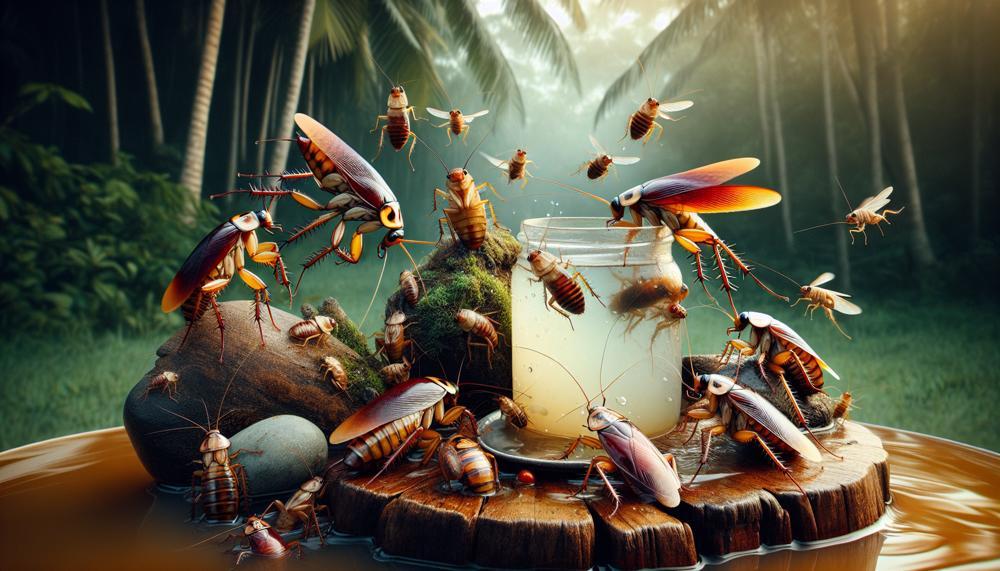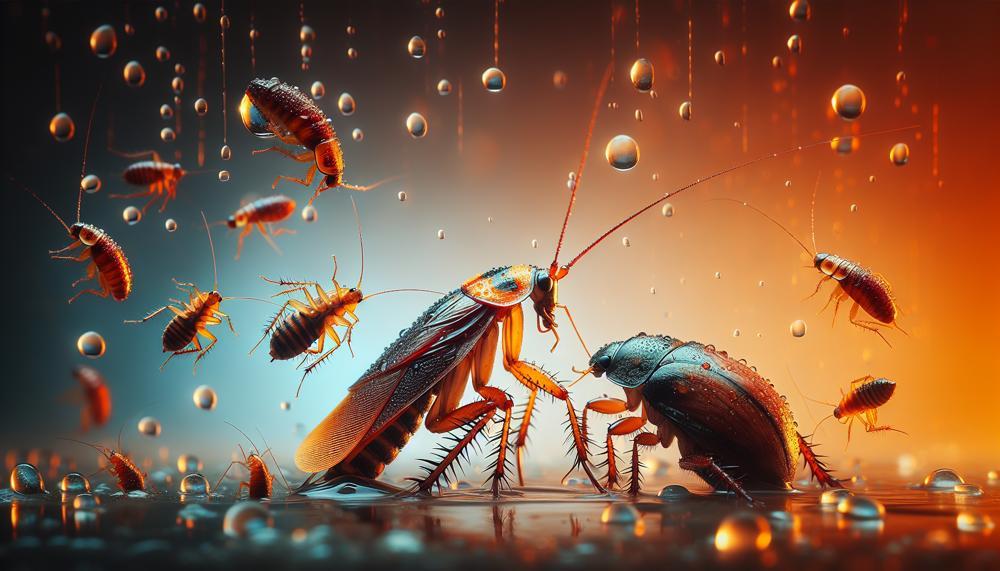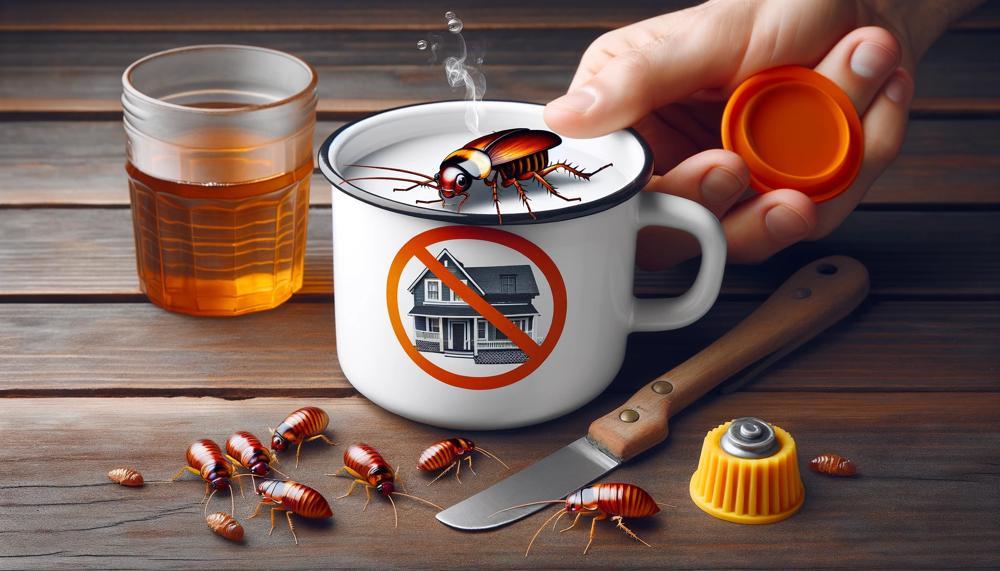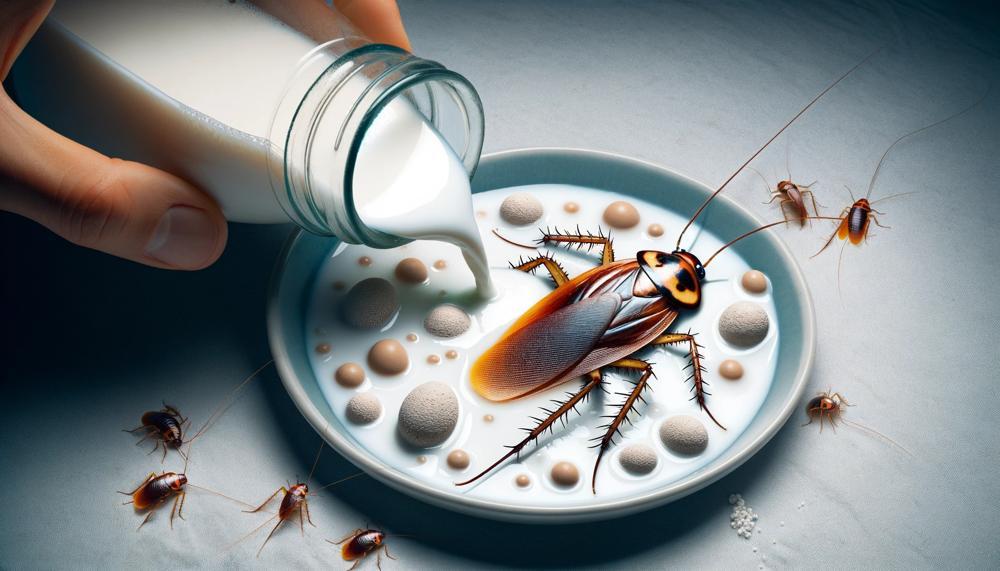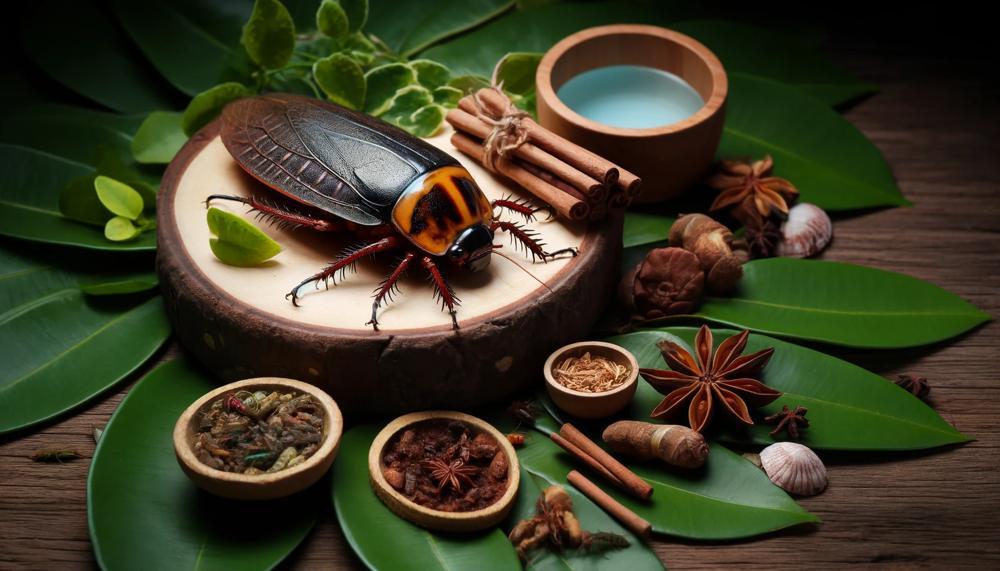In the realm of household pests, two notorious critters often cause a stir: cockroaches and water bugs. While they share some similarities, these creepy crawlies have distinct characteristics that set them apart. Let’s dive into the fascinating world of these common pests and uncover their unique traits.
- Cockroaches: The resilient survivors of the insect world, cockroaches have been around for over 300 million years. They’re known for their adaptability, thriving in various environments from kitchens to sewers.
- Water bugs: As their name suggests, water bugs have a close affinity with water. They’re commonly found in damp areas, such as bathrooms, basements, and near water sources.
Key Differences:
- Appearance: Cockroaches are typically dark brown or black in color, with long antennae and six legs. Water bugs, on the other hand, have elongated bodies, often brown or gray in color, and possess four legs for walking and two legs for swimming.
- Habitat: Cockroaches prefer warm, humid environments and are often found in kitchens, bathrooms, and other areas with food and water sources. Water bugs, as mentioned earlier, thrive in moist habitats, making bathrooms and basements their ideal hideouts.
- Diet: Cockroaches are omnivorous scavengers, feeding on a wide range of organic matter, including food scraps, decaying plants, and even paper. Water bugs, in contrast, have a more specialized diet, primarily feeding on insects, small crustaceans, and other aquatic organisms.
- Behavior: Cockroaches are nocturnal creatures, preferring to scurry about under the cover of darkness. Water bugs, on the other hand, are more active during the day, often seen darting across water surfaces or hiding in damp crevices.
Table of Contents
- 1 Physical Appearance: Size, Shape, and Color
- 2 Habitat and Behavior: Where They Live and What They Do
- 3 Diet: What They Eat and How It Affects Their Behavior
- 4 Reproduction: How They Multiply and Spread
- 5 Health Risks: Diseases and Allergies Associated with Each Pest
- 6 Prevention: Tips for Keeping Cockroaches and Water Bugs Out of Your Home
- 7 Conclusion
Physical Appearance: Size, Shape, and Color
| Feature | Cockroach | Water Bug |
|---|---|---|
| Size | 0.5 – 3 inches | 1 – 2 inches |
| Shape | Oval, flattened body | Elongated, oval body |
| Color | Brown, black, or reddish-brown | Dark brown or black |
Cockroaches and water bugs, while often mistaken for one another, exhibit distinct physical differences in size, shape, and color.
- Size: Cockroaches can range in size from 0.5 to 3 inches, with the larger species being more common in tropical climates. Water bugs, on the other hand, typically measure between 1 to 2 inches in length.
- Shape: Cockroaches possess an oval, flattened body that allows them to squeeze through narrow crevices and hide in tight spaces. Water bugs, in contrast, have an elongated, oval body that is more streamlined for swimming.
- Color: Cockroaches typically display shades of brown, black, or reddish-brown. Water bugs, on the other hand, are usually dark brown or black in color.
Habitat and Behavior: Where They Live and What They Do
| Cockroaches | Water Bugs |
|---|---|
| Kitchens | Damp areas |
| Bathrooms | Under sinks |
| Laundry rooms | In or near water |
| Basements | Drains |
| Attics | Sewers |
| Crawl spaces | Gutters |
| Behavior | Behavior |
| Nocturnal | Nocturnal |
| Hide during the day | Hide during the day |
| Feed on a variety of foods | Feed on insects, small animals, and decaying matter |
| Can transmit diseases | Can bite and cause allergic reactions |
Cockroaches and water bugs are two common pests that can be found in homes and businesses. Cockroaches typically reside in warm, humid environments, such as kitchens, bathrooms, and laundry rooms. They are nocturnal creatures that hide during the day and come out at night to feed. Cockroaches feed on a variety of foods, including human food, pet food, and decaying matter. They can transmit diseases, such as salmonella and E. coli.
Water bugs, also known as drain flies, are typically found in damp areas, such as under sinks, in or near water, and in drains. They are also nocturnal creatures that hide during the day and come out at night to feed. Water bugs feed on insects, small animals, and decaying matter. They can bite and cause allergic reactions.
Diet: What They Eat and How It Affects Their Behavior
| Food Source | Cockroaches | Water Bugs |
|---|---|---|
| Starch | Bread, Cereal, Pasta | Grains, Seeds |
| Sugars | Fruits, Candy, Soft Drinks | Fruits, Nectar |
| Proteins | Meat, Fish, Cheese | Algae, Insects |
| Fats | Oils, Butter, Grease | Plant Oils, Animal Fats |
| Decaying Matter | Dead Insects, Animal Droppings | Dead Fish, Aquatic Plants |
The diverse diet of cockroaches and water bugs reflects their adaptability and resilience in various environments. Cockroaches, known for their scavenging habits, consume a wide range of organic matter, including starchy foods like bread and pasta, sugary substances such as fruits and candy, protein-rich meats and cheeses, and fats like oils and grease.
Their ability to feed on decaying matter, such as dead insects and animal droppings, further contributes to their survival in unsanitary conditions.
Water bugs, on the other hand, primarily feed on aquatic plants and algae, but they also consume insects, small fish, and other aquatic organisms.
Their diet is influenced by the availability of food sources in their water habitats, such as ponds, lakes, and streams.
The diet of these insects significantly impacts their behavior and survival. Cockroaches’ ability to consume a variety of foods allows them to thrive in diverse environments, from homes and restaurants to sewers and garbage dumps. Their scavenging habits also contribute to their role as disease vectors, as they can transmit pathogens from unsanitary areas to food and surfaces.
Water bugs, while not typically associated with disease transmission, play a crucial role in aquatic ecosystems as predators and scavengers. Their diet helps control populations of other insects and small aquatic organisms, maintaining a balance in the ecosystem.
Reproduction: How They Multiply and Spread
| Cockroaches | Water Bugs |
|---|---|
| Oviparous (egg-laying) | Oviparous (egg-laying) |
| Carry egg cases (oothecae) externally | Lay eggs in or near water |
| Eggs hatch into nymphs | Eggs hatch into nymphs |
| Nymphs resemble adults but are smaller and wingless | Nymphs resemble adults but are smaller and wingless |
| Nymphs molt several times before reaching adulthood | Nymphs molt several times before reaching adulthood |
| Adults are sexually mature and can reproduce | Adults are sexually mature and can reproduce |
Cockroaches and water bugs are both insects that reproduce through the process of oviposition, which involves laying eggs. However, there are some key differences in the way that these two insects reproduce.
Cockroaches are oviparous, meaning that they lay eggs. The female cockroach carries the eggs in an external egg case called an ootheca. Once the eggs are ready to hatch, the female cockroach will deposit the ootheca in a safe location. The eggs will then hatch into nymphs, which resemble adults but are smaller and wingless. The nymphs will molt several times before reaching adulthood, at which point they will be sexually mature and able to reproduce.
Water bugs are also oviparous, but they lay their eggs in or near water. The female water bug will lay her eggs on the surface of the water or on aquatic plants. The eggs will then hatch into nymphs, which will live in the water until they reach adulthood.
The nymphs will molt several times before reaching adulthood, at which point they will be able to leave the water and fly.
Health Risks: Diseases and Allergies Associated with Each Pest
| Pest | Diseases and Allergies | Effects on Human Health |
|---|---|---|
| Cockroaches | Salmonella | Food poisoning, including diarrhoea, vomiting, and abdominal cramps |
| Dysentery | Diarrhoea with blood and mucus | |
| Asthma and allergies | Respiratory problems, such as wheezing, coughing, and shortness of breath | |
| Water Bugs | Chagas disease | A potentially fatal disease that can damage the heart, digestive system, and nervous system |
| Leptospirosis | A bacterial infection that can cause fever, chills, headache, and muscle aches | |
| Allergic reactions | Skin rashes, hives, and swelling |
Cockroaches and water bugs are common pests that can contaminate food and water, spread diseases, and trigger allergies. These pests can carry a variety of bacteria, viruses, and parasites that can cause a range of health problems in humans.
Cockroaches are known to transmit diseases such as Salmonella and Dysentery. These diseases can cause symptoms such as diarrhea, vomiting, and abdominal cramps. Cockroaches can also trigger asthma and allergies in some people. Their shed skin and droppings contain allergens that can cause respiratory problems, such as wheezing, coughing, and shortness of breath.
Water bugs can transmit Chagas disease, a potentially fatal disease that can damage the heart, digestive system, and nervous system. They can also transmit Leptospirosis, a bacterial infection that can cause fever, chills, headache, and muscle aches. Water bugs can also cause allergic reactions in some people, such as skin rashes, hives, and swelling.
To protect your health, it is important to keep your home free of cockroaches and water bugs.
Seal cracks and crevices where these pests can enter your home, and keep food and water sources covered.
If you see cockroaches or water bugs in your home, contact a pest control company to have them removed.
Prevention: Tips for Keeping Cockroaches and Water Bugs Out of Your Home
| Tip | Effectiveness | Ease of Implementation |
|---|---|---|
| Seal cracks and crevices in your home’s exterior | Very effective | Easy |
| Install door sweeps on all exterior doors | Very effective | Easy |
| Repair any leaks in your home’s plumbing | Very effective | Moderate |
| Keep your home clean and free of food crumbs and spills | Effective | Easy |
| Store food in airtight containers | Effective | Easy |
| Take out the trash regularly | Effective | Easy |
| Use a dehumidifier to reduce moisture in your home | Somewhat effective | Moderate |
| Use chemical insecticides as a last resort | Very effective | Difficult |
In addition to the tips listed in the table above, there are a few other things you can do to prevent cockroaches and water bugs from entering your home:
Inspect your home regularly for signs of infestation.Look for droppings, eggs, or live insects.
Be aware of the signs of a cockroach or water bug infestation. These include:
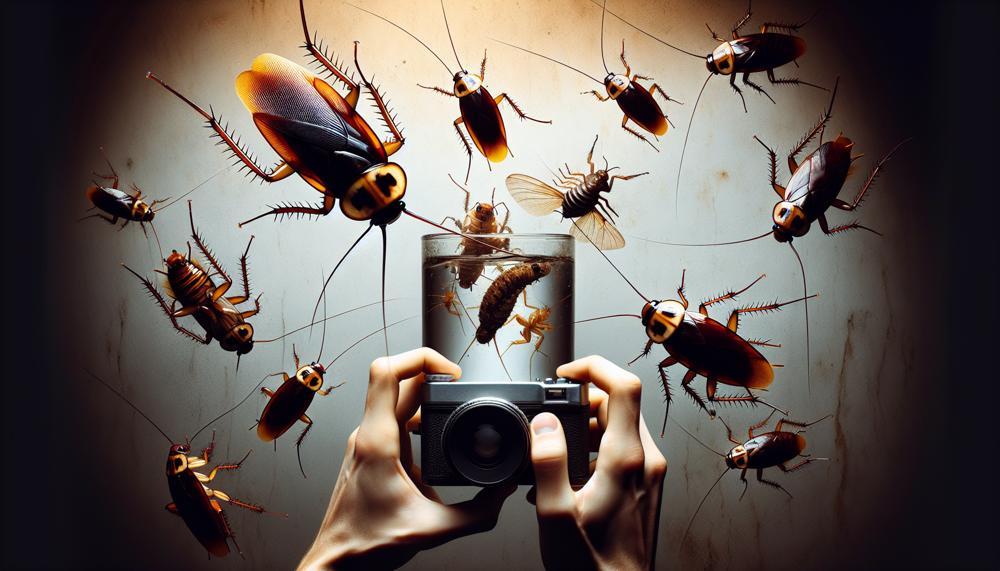
- Droppings: Cockroach droppings are small, dark brown or black pellets. Water bug droppings are larger and more oval-shaped.
- Eggs: Cockroach eggs are small, brown capsules that are often found in clusters. Water bug eggs are white and cylindrical.
- Live insects: Cockroaches are typically brown or black and have long, antennae. Water bugs are brown or black and have shorter antennae.
- If you find signs of an infestation, take action immediately. Clean the area thoroughly and seal any cracks or crevices where the insects may be entering. You may also need to use chemical insecticides to kill the insects.
By following these tips, you can help prevent cockroaches and water bugs from entering your home and keep your family safe from these pests.
Conclusion
In the realm of household pests, cockroaches and water bugs often share the spotlight, yet they’re far from identical.
Cockroaches, the resilient survivors, thrive in diverse environments with their adaptable nature, while water bugs, as their name suggests, have a strong affinity for damp areas.
Their distinct appearances, habitats, diets, and behaviors set them apart. Cockroaches, with their oval, flattened bodies and nocturnal habits, contrast with water bugs’ elongated frames and daytime activity.
Their dietary preferences also differ, with cockroaches being omnivorous scavengers and water bugs specializing in aquatic organisms. Understanding these differences is crucial for effective pest management and maintaining healthy environments.
Remember, prevention is key: seal entry points, eliminate moisture sources, and practice good hygiene to keep these unwelcome guests at bay.

